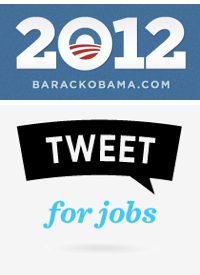
To rival the campaigning efforts of Mitt Romney and other GOP presidential hopefuls, President Obama’s reelection campaign is employing an array of high-technology tactics.
Last summer, the President’s reelection team hired dozens of engineers, developers, data scientists, and other specialists to bolster its new media and web development platform. “We need your help recruiting the folks that will wage the most innovative and effective digital campaign in history,” Obama’s top digital strategist Joe Rospars wrote in an email to prospective staff members, “a team that will not just surpass but demolish our fundraising, communications, and organizing goals.”
Renowned Chicago technologist Harper Reed joined the campaign last June, with a quest to make digital media and the World Wide Web a driving force in Obama’s reelection effort. “I am here to make sure technology is a successful force multiplier within the campaign,” Reed asserted in a statement to the Chicago Tribune. “This is a campaign, unlike a startup where technology drives. What we do here is empower.”
In a June 2011 article, the Tribune touched on some of the new practices campaign officials had put into place:
The Internet is expected to be as critical to President Barack Obama’s re-election campaign as it was in 2008. Obama launched the 2012 bid in late April with a flurry of digital blasts, which included a mass email and text message, Twitter posts, a YouTube video, and an app that links supporters and their Facebookfriends to his campaign Web site with a question: “Are you in?” the New York Times reported.
A newer marketing ploy that Team Obama recently launched is a Google ad campaign that displays the campaign website, barackobama.com, when certain keywords are typed into Google’s search engine. For example, typing “immigration reform” will generate an Obama campaign ad with the title, “Romney’s Extreme Views | barackobama.com.” Below the ad, a description reads, “He’d separate immigrants from their families. Join us and fight back.”
While GOP contenders such as Mitt Romney and Rick Santorum have also utilized Google’s ad service — along with implementing other technology strategies — the Obama campaign has been far more aggressive in courting donors through the web, spending more on Internet advertising than on radio, television, and telemarketing combined. So far, Obama’s 2012 efforts have far surmounted his web spending from 2008, spending five times more on Internet ads — spiking from $2.3 million to $12.3 million — than at this time four years ago.
Reed, Rospars, and other campaign staffers are also using technology to outflank some of the more arcane regulations governing the electioneering process. The Federal Election Commission (FEC) previously rejected a 2010 proposal that promoted text-message fundraising, which would allow mobile users to disperse small donations to a candidate or political party via text message, similar to how nonprofit organizations and mobile carriers collaborated to raise millions of dollars in donations for the 2010 Haiti earthquake relief. However, Nick Judd, managing editor for TechPresident, reported that the Obama campaign has found a workaround to the FEC rule:
As first reported by Time, the Obama campaign began collecting and storing credit card information and phone numbers from willing donors in a program called “Quick Donate.” This process also collects FEC-mandated information about each donor, such as employer and occupation. Time compares this to Amazon’s One-Click for campaigns: Like the online retailer, the Obama campaign can now store “customer” information so that, when they decide to make a transaction after their first one, they only need to log in and push a single button. And if a donor signed up in this way sends a text message with a dollar amount they want to give, the credit card already on file is re-billed.
In late March, campaign officials dispatched an SMS message to mobile phones of tens of thousands of former donors asking them to contribute more money. “Support Pres Obama in less than a minute,” the text read, “using our new secure system: just reply with the amount you want to give and we’ll charge your saved credit card.” Reply to the message by typing “25” or “10,” and that dollar amount is immediately charged from the credit card and transferred to the campaign’s coffers.
Team Obama has also embraced controversial practices often used in corporate marketing. One such practice involves tracking web behavior to target browsers based on the websites they have visited. Rayid Ghani, the Obama campaign’s new chief data scientist, has an extensive background in data mining, particularly with monitoring behaviors and detecting consumer trends. One of Ghani’s past research projects, for instance, included a model that tracked consumer behaviors to project future purchasing habits:
This project is aimed at using customer purchase data from retailers to create individual consumer models that are able to detect and predict the behaviors of customers with respect to their shopping. These consumer models enable the retailer to provide customers with individual and personalized interactions as they navigate through the retail store.
The practice of monitoring behavior and targeting consumer habits, however, remains a controversial issue, as many web users perceive the method as a violation of privacy. “Your browsing and your purchase habits and even the activity of your friends on social networks will influence what a candidate says to you,” averred Ashkan Soltani, an Internet privacy researcher and former consultant for the FEC. “It’s great to talk to folks about what they want to hear, but the problem is most people don’t know how deeply personalized it is.”



